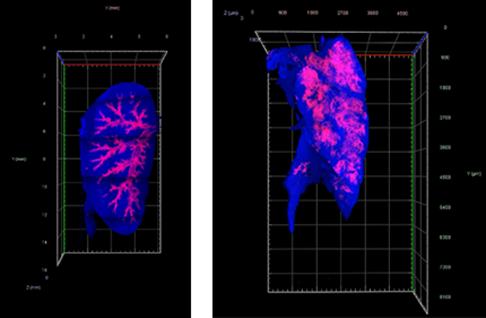- This joint research proposal aims to explore a new therapeutic target for lung cancer by RNAseq analysis of invasive epithelial cells.
- In the analysis of the iUIP mouse model, the idiopathic pulmonary fibrosis (IPF) mouse model, an invasive bronchial epithelial cell has been found.
- These invasive epithelial cells may be precancerous and are implicated in cancers associated with IPF.
- Drugs for interstitial pneumonia are also applied to the treatment of lung cancer.
Expectation and Next step
- Proposes to use the iUIP mouse model to identify therapeutic targets and to collaborate with companies seeking to develop new drugs.
Summary of the study
- Idiopathic pulmonary fibrosis (IPF) can be complicated by lung cancer and is difficult to treat.
- Invasive epithelial cells express MMP7, disrupt the basement membrane and have an EMT-like phenotype (acquired mobility). The situation is therefore close to a pre-cancerous state.
- To analyze invasive bronchial epithelial cells, a new transgenic mouse (D1CC x D1BC x mCherry transgenic mouse) was created by introducing mCherry gene into iUIP mouse, and RNAseq analysis data have already been obtained.
Our Data
- Successful visualization of cells in the precancerous state of lung cancer (squamous cell carcinoma) and RNAseq analysis.
- Control (left), epithelial cells that have acquired abnormal mobility observed during IPF (right), and the fragility of the airway itself is also observed at this time. The pictures were obtained by LightSheet microscopy.
 |
Benefits of this joint research gain
Lung cancer complications in interstitial pneumonia have a high unmet medical need, especially as there is no choice of therapeutic agents. This study aims to develop early lung cancer inhibitors, but given the latest research findings in this area, there are also aspects that could lead to the development of pulmonary fibrosis therapeutics
Researcher
Dr. Satoshi Kanazawa (Nagoya City University)
Project.WL-04827b


